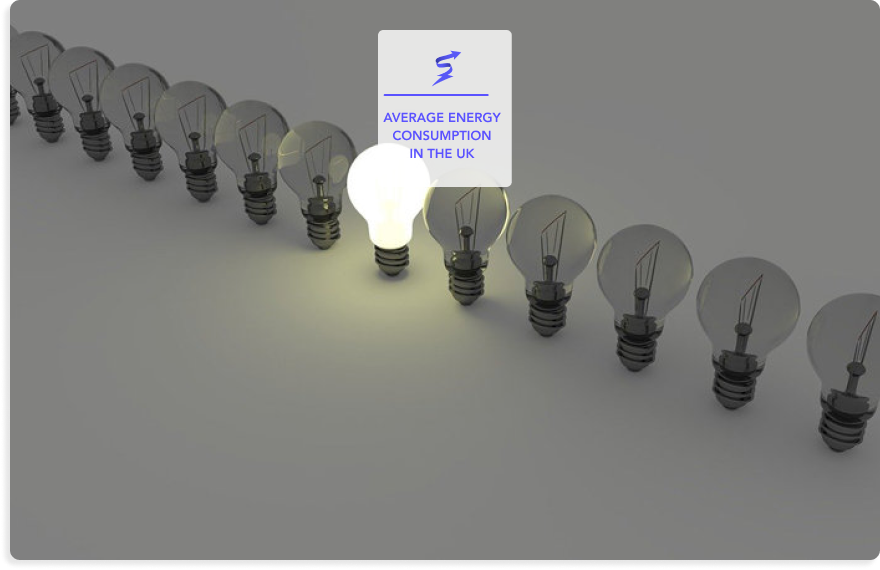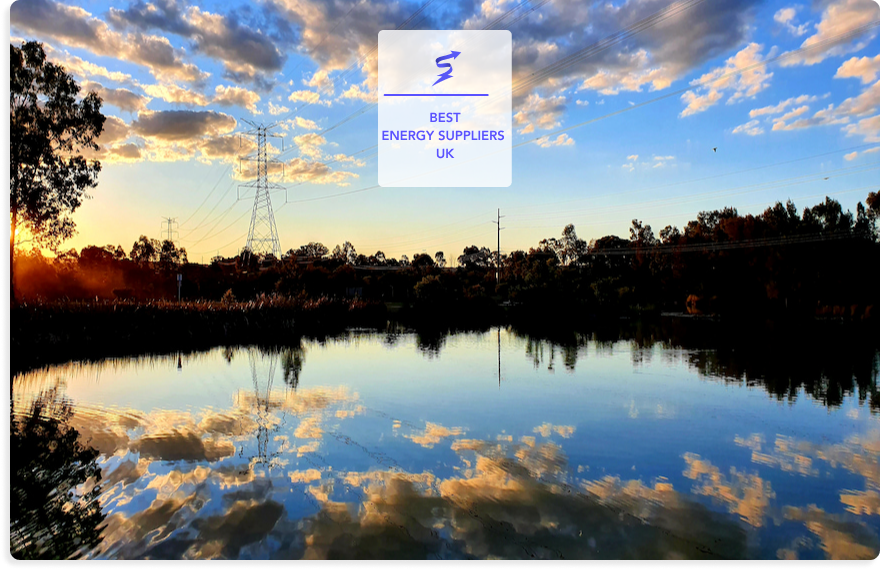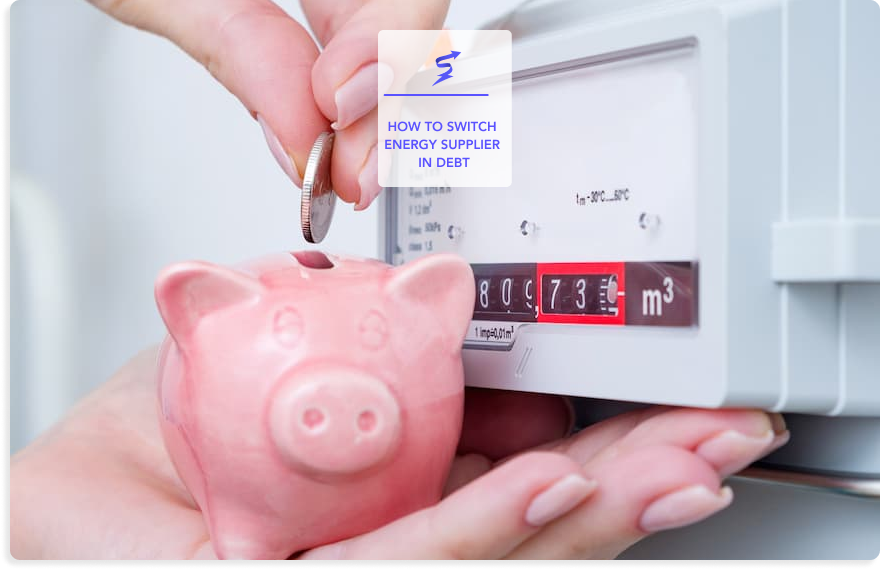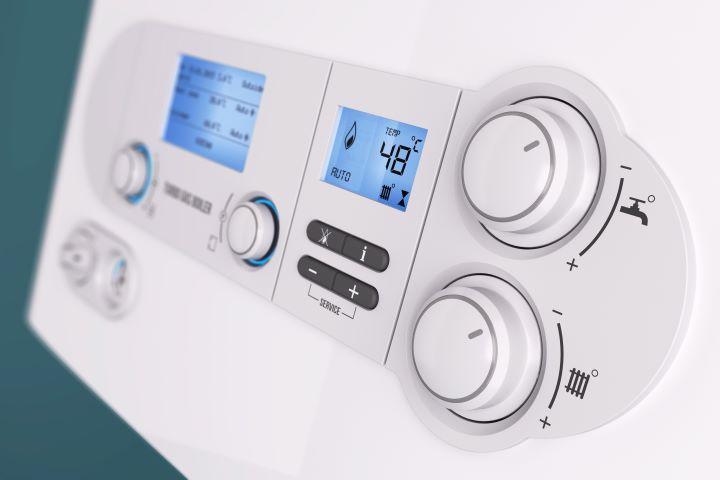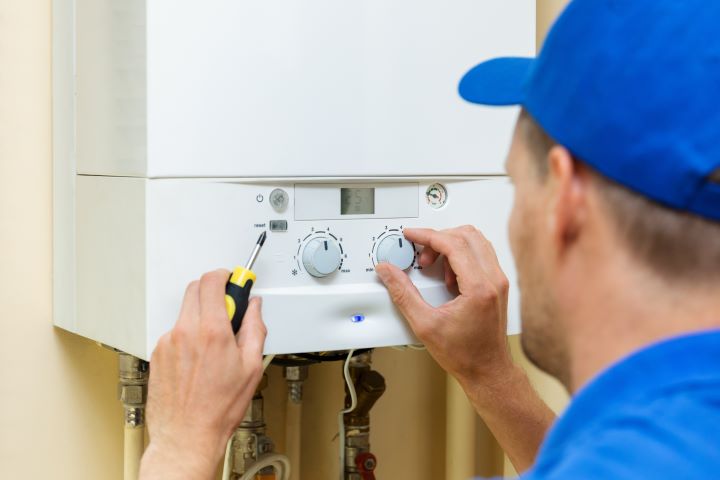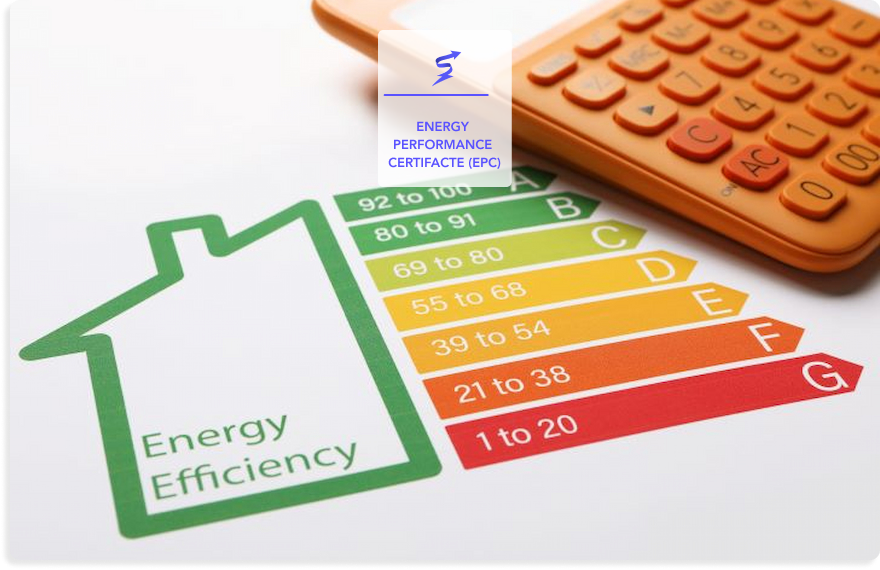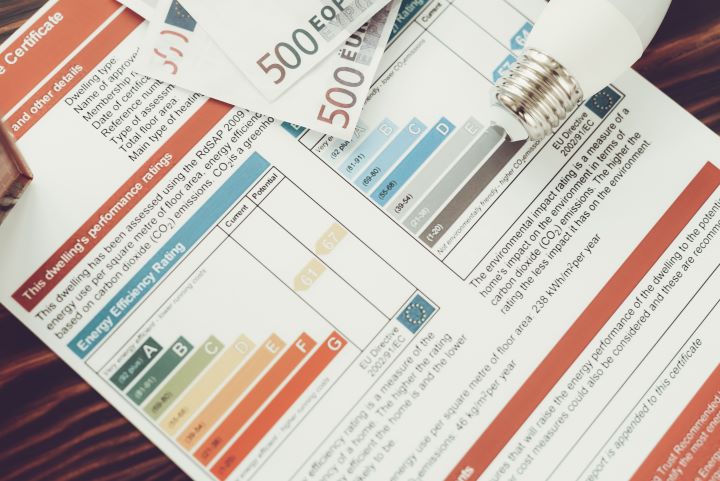What is the average energy consumption in the UK in kWh?
Average electricity and gas consumption varies greatly depending on use and season. In addition, the average energy consumption in statistics is often pulled up by a few households with high consumption.
What's a kWh?
Before you can understand how much energy your home consumes, it’s important to find out a little more about how energy is measured. Household energy consumption in the UK is measured in terms of kilowatt hours, or kWh. A kilowatt is 1,000 watts. A kilowatt hour is a measurement that equals the amount of energy you would use if you had a 1,000 watt appliance running for an hour. So for example, if you had a 1,000 electric radiator on for an hour, it would use up one kWh.
Smaller appliances take a lot longer to consume a kWh. Even the brightest light bulb is normally only 100 watts. This means it would take 10 hours to consume 1kWh of energy. A 2,000 watt appliance on the other hand would have an average energy consumption of 1 kWh every 30 minutes.
What’s the Average Energy Usage UK?
Average energy consumption varies dramatically between households. Large, poorly-insulated homes, and those that are jam-packed with tech, are likely to use considerably more electricity than small, well-insulated properties. According to government figures, the average household in the UK consumes 3760 kWh per year. This figure has dropped over the last few years, dipping below 4,000kWh for the first time in decades in 2014. The average kWh per day in a UK household is in the range of 8.5 to 10 kWh.
This drop in average energy consumption is largely down to more efficient appliances and improved insulation. The increased popularity of smart meters has also made a lot of people more aware of the amount of energy they’re using. This has encouraged a number of households to cut their usage and reduce their energy bills.
How much is the average kWh in the UK?
The average daily consumption in a UK household is between 8.5 and 10 kWh. Many factors can influence this average energy consumption and the amount of electricity costs, such as the appliances that are used.
What is the average kwh usage per day in the UK?
The average daily consumption in a UK household is between 8.5 and 10 kWh. Many factors can influence this average energy consumption and the amount of electricity costs, such as the appliances that are used. A list of the energy consumption of different appliances you can find later on.
How much is the average kwh per year in the UK?
An average household in the UK has 2.4 people and uses 8 kWh of electricity and 33 kWh of gas per day, based on Ofgem data. This gives an average electricity consumption of 2,900 kWh of electricity and 12,000 kWh of gas per year.
How much is the average kwh usage per month?
The same calculation made by Ofgem shows, that the average monthly consumption would be a gas consumption of 1000 kWh and an electricity consumption of 242 kWh.
What is the average electricity consumption in the UK?
The East of England had the highest average household electricity consumption in the UK. In 2020, this amounted to 4,369 kilowatt hours per household. In contrast, households in the North East of England had the lowest average consumption of 3,360 kilowatt hours per household.
| Year | Electricity Consumption in kWh |
|---|---|
| 2012 | 4,133 |
| 2013 | 4,042 |
| 2014 | 3,981 |
| 2015 | 3,859 |
| 2016 | 3,823 |
| 2017 | 3,717 |
| 2018 | 3,642 |
What is the average gas usage in the UK?
Average household gas consumption per meter was 28 per cent lower in 2020 than in 2005.
The fall in average gas consumption per meter has levelled off in recent years, partly due to methodological changes and probably partly due to the COVID-19 pandemic.
What is the typical gas usage in the UK
When it comes to average gas consumption, the figures are a little higher. A household with low consumption will probably get through around 8,000 kWh per year, while a high consumption household could use up to 17,000 kWh per year.
How is energy consumption changing year-to-year?
Total gas consumption in 2020 was 1.3% higher than in 2018. Unlike electricity, the household sector is the largest consumer, consuming 64% of total gas consumption in the UK in 2020.
Energy Intensity change
Energy consumption per unit of production is also called energy intensity. This shows how efficiently energy is used over time. Changes in energy intensity occur for a variety of reasons: Process changes, technological change and structural changes. In the household sector, there has been a general downward trend in domestic consumption since 2005, which can be attributed to improvements in energy efficiency measures. The decline in the passenger and freight transport categories in 2020 is a direct result of the Covid 19 pandemic.
What is the average energy consumption per household in the UK?
The number of kilowatts it takes to power a house varies depending on a number of factors. As heating and cooling appliances are generally the most expensive, the size of your house can have a big impact on its energy consumption.
What is a typical household’s energy use?
A 3-bed house consumes around 3,000 kwh of electricity. Ofgem already classifies this size as medium consumption. Of course, the actual consumption varies greatly depending on the individual circumstances.
how many kwh does a house use per day in the UK
The average kWh per day in a UK household is between 8.5 and 10 kWh. Many factors can affect your average energy consumption and the amount of electricity you spend - including the appliances you use
How many kWh does a house use per month in the UK
According to Ofgem publications, a house in the UK consumes 242 kWh of electricity and 1,000 kWh of gas per month.
What is the average household electricity usage in the UK
One of the most important factors affecting your energy bill is the size of your home. Your energy consumption habits and where you live also play a role, so this is only a rough guide. Here you can find the average electricity consumption depending on the size of your house.
| Number of bedrooms | Electricity consumption (kWh) |
|---|---|
| 1-2 | 2,000 |
| 3 | 3,100 |
| 4 or more | 4,600 |
![]()
How many kWh of gas does a house use?
The average gas consumption does not depend so much on the number of people per household, but rather on the number of bedrooms per dwelling. In the table below you will find the average gas consumption per number of bedrooms:
| Number of bedrooms | Gas consumption (kWh) |
|---|---|
| 1 | 10,000 |
| 2 | 15,000 |
| 3 | 25,000 |
| 4 | 29,000 |
| 5 | add 2,500 per room |
How does your home compare to others in the UK?
The table below shows the average energy consumption of different types of homes commonly found in the UK:
| Type of home | Average energy consumption (kWh) |
|---|---|
| Mid-terrace | 2779 |
| Flat | 2829 |
| End terrace | 344 |
| Semi-detached | 3847 |
| Bungalow | 3866 |
| Detached house | 4153 |
What appliances use the most electricity?
Most of the electricity used in your home will be consumed by your appliances. Some of these appliances are surprisingly energy hungry, even when they’re on standby.
In general, the gadgets that use the most electricity are those that heat and cool things. So your fridge, freezer, kettle, toaster and electric boiler are likely to contribute the most towards your average electricity consumption. Appliances like lamps, TVs and stereos generally use much less energy than other electronics. Although leaving them on standby does add significantly to their average consumption.

Want to switch energy suppliers? Switching with us has never been simpler.
Free Service
Let Switch Plan help you with your electricity and gas needs.
More info
How do we use electricity in the home?
Washing machines, dishwashers and similar appliances account for about 25 per cent of an average household's electricity consumption. Televisions and game consoles consume 19 per cent of a household's electricity.
Energy consumption by appliances
The table below shows the average energy consumption of common household appliances and how much they add to your household energy bills.
- Wet appliances use the most energy in the household, with a percentage of 21% of total use
- After that come the cold appliances with a share of 16%
- Followed by the lighting with 15%
- Cooking appliances (ovens, microwaves) and Consumer electronics (TV, laptop) share the following place with 14 % each. 14% are also consumed from undefinable sources
- Lastly, 7% is consumed by ICT
How much does is cost to run a TV?
On average, most 55-inch TVs use about one unit of electricity to watch TV for 12 hours - the equivalent of 2p per hour. The Energy Saving Trust estimates that a 60-inch A-rated TV would cost £39 per year to run. In contrast, an equivalent 32-inch TV would cost only £12.
How much energy does a fridge freezer use?
The fridge freezer uses electricity all the time and the bigger it is, the more energy it consumes. Research has shown that it costs around £39 per year to run a 180 litre A class fridge freezer. A larger model with a capacity of 525 litres will increase your fridge's electricity consumption to around £52 per year.
How much energy does lighting use?
Depending on the bulb, the energy consumption can vary. A conventional light bulb that consumes 0.06 kWh would cost you £21.90 per year if operated 8 hours per day. LEDs, on the other hand, are much cheaper. For an LED that lasts for years and uses only about 6 kWh per year, you pay about £6.
How to reduce your average energy consumption?
If you want to minimise your annual energy bills, or reduce your carbon footprint, there are lots of ways to lower your average energy consumption. Making a few small changes can actually make a significant difference to your annual energy bill.
- Invest in energy efficient appliances
- Don’t leave appliances on standby
- Turn your thermostat down
- Swap standard light bulbs for energy efficient alternatives
- Turn lights off when rooms aren’t in use
- Wash clothes at a lower temperature
How much does my energy consumption cost?
According to Ofgem, the typical household of 2.4 people uses 2,900 kWh of electricity a year at an average cost of 20p/kWh. This translates into an average electricity bill of £580 per year or £48.33 per month. To calculate your energy cost you can multiply the wattage by the number of hours you use it and then divide the result by 1,000. A very simple example: If you pay 17 pence per kWh and your microwave has 1,000 watts, it will cost you 17 pence to run it for one hour.
How is my bill calculated?
Your energy consumption is the most important part of your bill. Your energy supplier charges for each unit or kilowatt hour (kWh) you use, so the more you use, the more you pay.
What is an average dual fuel bill?
A dual-fuel tariff means that you get both your gas and your electricity from the same supplier. People usually get their gas and electricity from two different energy companies. However, dual energy tariffs can be a good way to save money on your gas and electricity bills.
The calculation of the average gas and electricity bill in the UK depends on a variety of factors. However, according to Ofgem, the average variable dual fuel tariff from April 2021 will be £95 per month or £1,138 per year.
What is an average electric bill?
What is the average electricity bill per month? In 2020, the average electricity bill per year was £707. This is £59 per month, an increase of 1.3% on 2019. These figures are based on government figures for an annual consumption of 3,600 kWh/year.
What is the cost of electricity per kWh?
The unit cost of electricity in the price cap until 31 March 2022 was only £0.21/kWh. The actual cost, under the cap, for normal consumption and paying by direct debit, was on average £0.185/kWh in 2021.
What is an average energy bill?
According to Ofgem's January 2022 figures, the average variable tariff for two fuels was £1,277 per year or £106.41 per month. So we can assume that gas and electricity cost about £3.50 per day.
How much does gas cost per kWh?
The unit cost of electricity in the price cap until 31 March 2022 was only £0.21/kWh. Customers with normal consumption who pay by direct debit pay an average of £0.185/kWh in 2021.
How much energy do we produce and consume?
The amount of energy the UK produces varies year by year. For a long time, the UK was fairly self-sufficient when it came to energy production. However, as the North Sea oil reserves have begun to dwindle, the country has started relying on imports for an ever-larger proportion of its energy needs.
Energy consumption and production in the UK
Energy in the UK comes from a number of different sources including fossil fuels, renewables, gas and nuclear. At the moment, the majority of our energy still comes from fossil fuels. Although over the past decade, the percentage of energy derived from fossil fuels has dropped significantly. This has mostly been caused by the rise of renewable energy and more efficient green energy production processes.
| Fuel | 2011 | 2018 |
|---|---|---|
| Gas | 40% | 39% |
| Coal | 30% | 5% |
| Nuclear Power | 19% | 19% |
| Renewables | 4% | 33% |
In 2019, the UK produced a total of 323.7 TWh of electricity. That was 2.8% lower compared to 2018 when the UK produced 332.9 TWh of electricity. In 2019, total energy consumption in the UK stood at 301.76 TWh. A TWh is a Terawatt-hour, or 1012 watt-hours.
Energy dependency in the UK
In 2017, net imports made up 36% of UK energy needs. This means that 64% of the energy consumed in the UK is made in the UK.
Energy consumption by country
How much is the average kWh in the UK?
The UK compares relatively favourably with other developed nations around the world, with 4,648 kWh gas consumption per year. For example, people living in the US and Canada consume almost 12,000 kWh in electricity every year.
Australia and France are also high-energy consumers while households in Russia and Italy get through just 2,000 – 3,000 kWh per year each. Countries in Asia consume the least energy with the average consumption in China, India and Indonesia between 1,000 and 2,000 kWh per year.
| Country | kWh usage per year |
|---|---|
| Canada | 11,879 kWh |
| USA | 11,698 kWh |
| Australia | 7,227 kWh |
| France | 6,343 kWh |
| UK | 4,648 kWh |
| Italy | 2,777 kWh |
| Russia | 2,419 kWh |
| India | 900 kWh |
Looking to switch energy deals?Leave your phone number to request a call back from us!
Free Service
